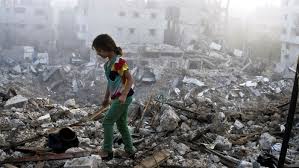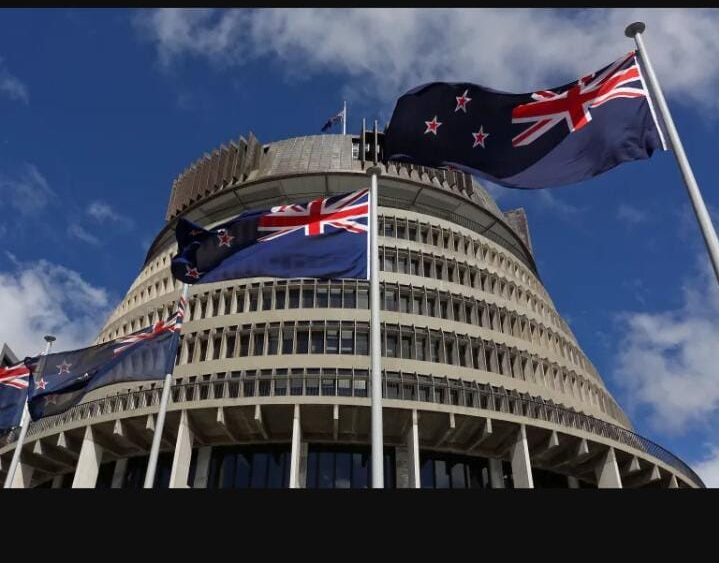
The Israel-Gaza conflict of 2014, also known as Operation Protective Edge, was one of the most violent escalations between Israel and the Palestinian territories in recent years. Spanning from July 8 to August 26, 2014, the war resulted in significant loss of life, widespread destruction, and a deepening humanitarian crisis. This article explores the key events, causes, impacts, and international responses to the conflict.
Historical Background of the Israel-Gaza Conflict
The conflict between Israel and Gaza has deep roots, stemming from the long-standing Israeli-Palestinian conflict. Tensions have been fueled by territorial disputes, Palestinian resistance to Israeli occupation, and the blockade of Gaza. The 2014 war was the third major confrontation between Israel and Hamas, the governing political and military faction in Gaza, in six years, following wars in 2008–2009 and 2012.
Key Causes of the 2014 Conflict
The immediate trigger for the war was the kidnapping and murder of three Israeli teenagers in the West Bank by Hamas-affiliated individuals. In retaliation, Israel launched a crackdown on Hamas in the West Bank, leading to widespread arrests and heightened tensions. Hamas responded by firing rockets into Israeli territory, which prompted Israel to initiate a military offensive aimed at stopping the rocket fire and weakening Hamas’ military infrastructure.
Operation Protective Edge: The Israeli Offensive
Operation Protective Edge was launched on July 8, 2014, by Israel with the declared goal of ending rocket attacks from Gaza. The operation involved both airstrikes and a ground invasion. The Israeli military targeted Hamas militants, rocket-launching sites, tunnels, and suspected arms depots. However, many of these strikes occurred in densely populated urban areas, leading to significant civilian casualties and the destruction of homes, schools, and hospitals.Hamas’ Military ResponseHamas and other militant groups in Gaza responded to Israel’s offensive by intensifying rocket attacks on Israeli cities and towns. They also utilized a network of underground tunnels to carry out cross-border raids. Hamas’ rocket capabilities had improved since previous conflicts, with rockets reaching deeper into Israeli territory, including major cities such as Tel Aviv and Jerusalem. Despite Israel’s Iron Dome missile defense system, some rockets evaded interception, causing damage and panic among Israeli civilians.
Civilian Casualties and Humanitarian Crisis
The 2014 war took a devastating toll on the civilian population of Gaza. According to the United Nations and various humanitarian organizations, more than 2,200 Palestinians were killed, including approximately 1,500 civilians, with over 500 children among the dead. On the Israeli side, 73 people were killed, most of them soldiers. The conflict left thousands of Palestinians injured, and nearly 18,000 homes were destroyed or severely damaged, leaving many homeless.The blockade on Gaza, coupled with the destruction caused by the war, created a severe humanitarian crisis. Critical infrastructure, including water and electricity supplies, was heavily damaged, exacerbating the already dire living conditions in the territory.
International Reactions and Diplomacy
The international community responded to the conflict with calls for a ceasefire, though reactions were mixed regarding blame and responsibility. The United Nations, the European Union, and other international organizations condemned the violence and urged both sides to end the hostilities. Israel was criticized for what many saw as a disproportionate response, while Hamas was denounced for indiscriminately targeting Israeli civilians.Efforts to broker a ceasefire were led by Egypt, which acted as a mediator between Israel and Hamas. Several temporary ceasefires were agreed upon, only to be broken. On August 26, 2014, a long-term ceasefire was finally reached after 50 days of fighting. The agreement did not resolve the underlying issues of the conflict but temporarily halted the violence.
The Impact on Gaza’s Economy and Infrastructure
The war caused widespread destruction to Gaza’s infrastructure, leaving the territory in ruins. The economy, already struggling under the Israeli-Egyptian blockade, was further weakened by the conflict. Factories, farmlands, and businesses were destroyed, leaving tens of thousands of Palestinians unemployed. The war also severely affected Gaza’s healthcare system, with hospitals and medical centers unable to cope with the influx of casualties and damage.
Psychological and Social Consequences
The psychological impact of the war on both Israelis and Palestinians cannot be overstated. In Gaza, entire generations of children were traumatized by the violence, while in Israel, civilians lived in fear of rocket attacks. The 2014 war also deepened the division between Israelis and Palestinians, making prospects for peace seem even more remote. It entrenched feelings of mistrust, anger, and resentment on both sides.
Post-War Ceasefire and Aftermath
The August 2014 ceasefire ended the immediate fighting but left Gaza in a state of humanitarian emergency. The ceasefire terms included a loosening of some restrictions on the movement of goods into Gaza, but many of the underlying issues, including the blockade and political tensions, remained unresolved. Rebuilding efforts were slow, hindered by political disagreements and the blockade.
A Legacy of Violence
The 2014 Israel-Gaza war was a reminder of the ongoing and deeply entrenched conflict between Israelis and Palestinians. While the war ended with a ceasefire, the underlying causes of the conflict were left unaddressed, ensuring that the cycle of violence would likely continue. The toll on civilians, particularly in Gaza, was immense, and the long-term impact of the war continues to be felt across the region.The 2014 conflict highlighted the urgent need for a political solution to the Israeli-Palestinian conflict, one that addresses the root causes of violence, human suffering, and decades of occupation and blockade. Until a sustainable peace is achieved, Gaza remains a powder keg of tension, and future escalations are always a possibility.
Subscribe to Follow Global Trends for daily global news.
Find Out How To Make Money As A Full Time Writer/Blogger Guide.
To Advertise, Advertise Your Affiliate Links on FollowGlobalTrends.com for Just $1 Per Link Per Month!
Related Articles
Israel’s War on Gaza Live: Israeli
Israel’s War on Gaza: Live Updates on Israelis in Cairo as US Says Truce in Sight
Israel’s War on Gaza Live: Truce Still Elusive as Israeli Attacks Kill 52
Brief: Israel War on Gaza Live: No Letup in Israeli Attacks Ahead of Truce Talks
Barclays Backtracks on Israeli Bond Withdrawal
Israel War On Gaza News Update
Written by: Enyoghasi Ngozi pricillia

